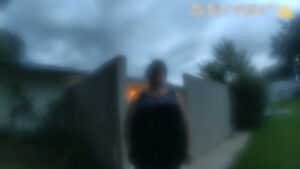Chasing a Mystery in "The Long Goodbye"
- Zachary Zanatta

- Apr 23, 2024
- 4 min read
Robert Altman’s The Long Goodbye is a staple of the neo-noir genre. A hazy exploration of LA’s criminal underbelly bolstered by a career defining performance from the effortlessly cool Elliott Gould, Altman’s crime saga has proven to be one of the most influential films to emerge from the New Hollywood movement. Its fingerprints can be found all over American cinema, from the twisty ins-and-outs of The Big Lebowski to the drugged-out psychedelia of Inherent Vice, without Altman, the crime film as we know it today would be radically different.
Altman’s film oozes with his unique style, sporting his signature narrative ambivalence and cacophony of overlapping dialogue, however, Altman utilizes one particular trick in The Long Goodbye that, for me, solidifies it as one of the most effective crime thrillers ever made. Altman’s trick is sometimes obvious, and sometimes subtle, and it begins at the first frame and ends at the last. I didn’t take account of this one my first watch, it slipped under the radar as I tried to wrap my head around the complex narrative courtesy of Raymond Chandler, but on my second, it became my favorite element of the film. From the very first shot of Private Detective Philip Marlowe’s LA apartment to the final shot of Marlowe slowly vanishing from view on a scenic Mexican road, the camera never stops moving.
What may seem like a clever gimmick, elevates The Long Goodbye from solid thriller to all-timer status. What Altman intends to reveal with his camerawork extends to a core tenant of thriller films, and perhaps even film itself, that being the concept of voyeurism. To some theorists, the act of movie-going is its own form of voyeurism. We as an audience are viewing subjects without their consent. The fact that we buy the ticket and take our seats to view a film happens independently of what may be onscreen, fictional or not. The actors and filmmakers cannot object to our viewing practices, nor can the fictitious characters. Cinema is founded upon a one-sided transaction, we the audience and the unknowing subject.
This concept is furthered within the thriller genre. To be a voyeur to a comedy or action film is one thing, but to bear witness to a thriller is very different. We are made privy to crime, to unsavory events that the characters would rather stay hidden. The thriller audience is restless, digging further into the film to uncover secrets that attempt to evade us. Much like the detectives that populate the genre, the thriller audience search for answers. The curtain is pulled back on sex and murder, acts deemed unruly are thrusted into the light, and we the audience voraciously consume it. The thriller plays on the human desire to seek the immoral, perhaps to condemn it, or perhaps to secretly indulge.

This voyeuristic impulse is rendered via The Long Goodbye’s protagonist, Philip Marlowe. He’s a private detective tasked with untangling the mess that makes up the narrative of the film. He spends the film peering through windows and crashing parties, generally posing as a thorn in the side of privacy. He is an isolated character, finding his sole companionship in the form of his cat. He is untethered in the film, and it’s because of this disconnect that Marlowe invades the world around him, he was never truly welcome. He inhabits the role of voyeur, skirting around the border of the world but never inside. He’s a private eye, seeing but never partaking.
However, Marlowe isn’t the only voyeur. The audience dons the mantle of private snoop as well, peeking behind corners to catch a glimpse of the unfolding plot. Altman doesn’t allow the audience the luxury of passivity, we become active voyeurs. Our point of view isn’t inhibited by cinematic guidelines, the camera becomes us. The thriller audience isn’t content to relax behind a tripod and bear witness to what they’re given, they intrude and explore, peeking behind blinds and cupping their ear to the wall. In The Long Goodbye, the camera never leaves the dolly. It orbits around the characters, never pausing once. Like Marlowe, it seeks answers, and to find said answers it cannot remain static. It zooms and pans and rotates and pushes in and pulls out, but it never stops. It digs us further into LA’s criminal underbelly, and we want it to. It feeds into our desires to see, and it permits us the comfort of anonymity, but not entirely. We are not the all-seeing eye that cinema often grants us, we are forced to occupy the space. The camera doesn’t soar, it skulks. We want to know the secrets, and Altman makes us work for it. We don’t just observe the film, we plunge into it, sifting through clues and weaving through crowds to solve the mystery.
As an audience, we often watch, but in The Long Goodbye, we look. Altman makes the audience aware of their voyeurism, creating an active character opposed to a passive spectator. All of this is rendered through the restless lens of the camera. Spectatorship is uprooted from its static position; it embraces cinematic voyeurism and glides through the story world on its own two legs. Altman understands discovery, and his unique camerawork provides the audience with their own sense of sleuthing. The Long Goodbye is a film that probes the mind and soul, and properly exploring its world involves more than sitting back with a bucket of popcorn. With the camera as our vessel, we explore intersecting plots and relationships populating the crooked California underground, never once pausing in our restless pursuit for answers.





